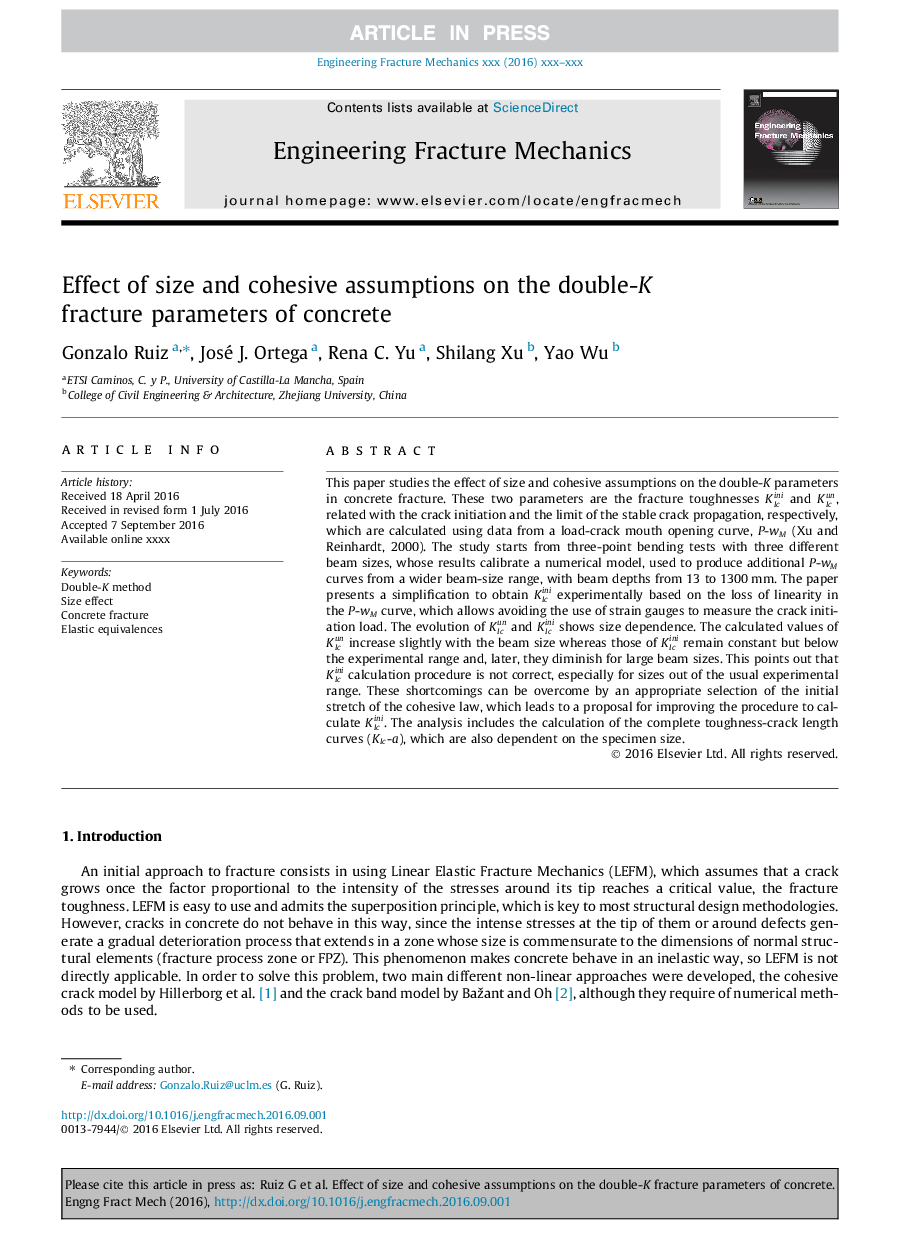| Article ID | Journal | Published Year | Pages | File Type |
|---|---|---|---|---|
| 5014194 | Engineering Fracture Mechanics | 2016 | 20 Pages |
Abstract
This paper studies the effect of size and cohesive assumptions on the double-K parameters in concrete fracture. These two parameters are the fracture toughnesses KIcini and KIcun, related with the crack initiation and the limit of the stable crack propagation, respectively, which are calculated using data from a load-crack mouth opening curve, P-wM (Xu and Reinhardt, 2000). The study starts from three-point bending tests with three different beam sizes, whose results calibrate a numerical model, used to produce additional P-wM curves from a wider beam-size range, with beam depths from 13 to 1300Â mm. The paper presents a simplification to obtain KIcini experimentally based on the loss of linearity in the P-wM curve, which allows avoiding the use of strain gauges to measure the crack initiation load. The evolution of KIcun and KIcini shows size dependence. The calculated values of KIcun increase slightly with the beam size whereas those of KIcini remain constant but below the experimental range and, later, they diminish for large beam sizes. This points out that KIcini calculation procedure is not correct, especially for sizes out of the usual experimental range. These shortcomings can be overcome by an appropriate selection of the initial stretch of the cohesive law, which leads to a proposal for improving the procedure to calculate KIcini. The analysis includes the calculation of the complete toughness-crack length curves (KIc-a), which are also dependent on the specimen size.
Keywords
Related Topics
Physical Sciences and Engineering
Engineering
Mechanical Engineering
Authors
Gonzalo Ruiz, José J. Ortega, Rena C. Yu, Shilang Xu, Yao Wu,
